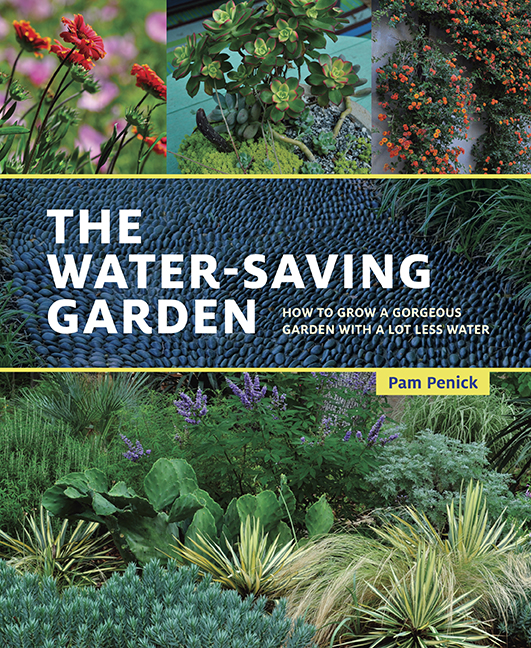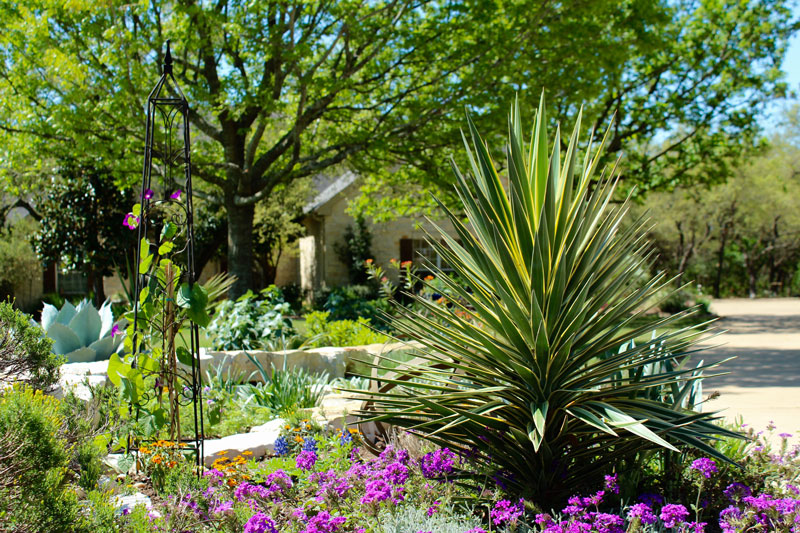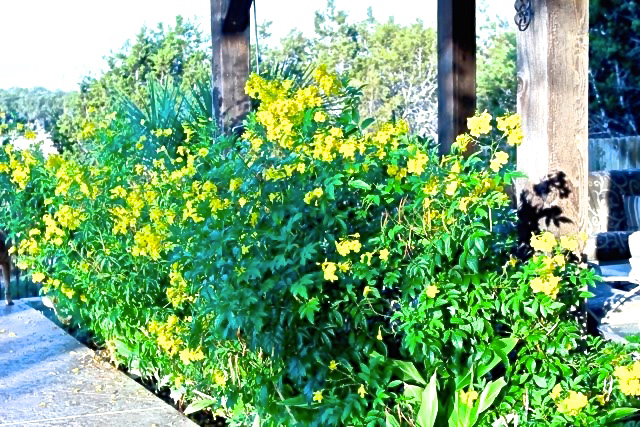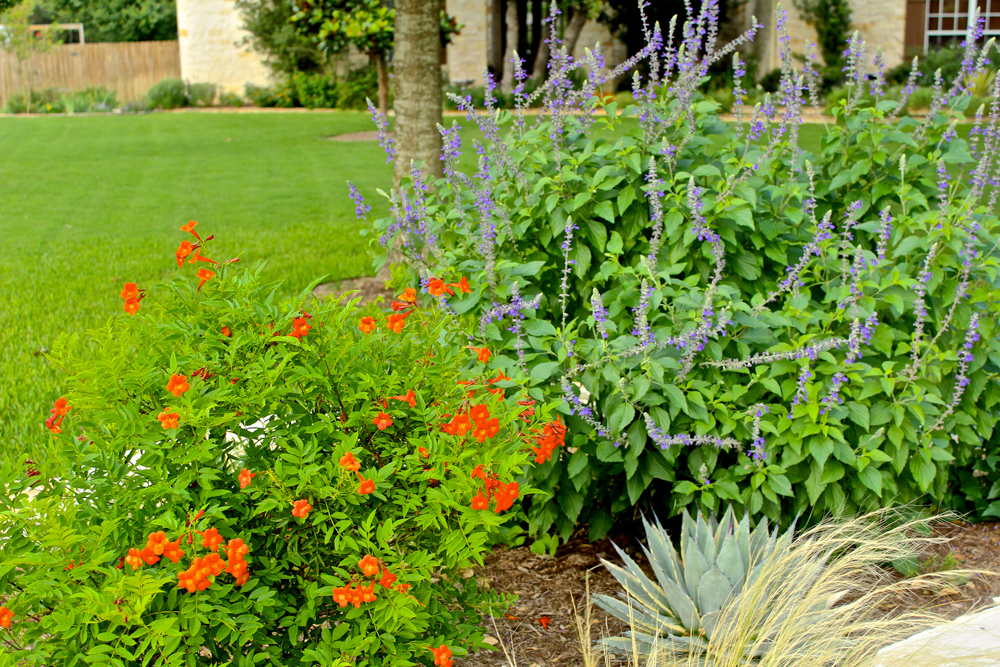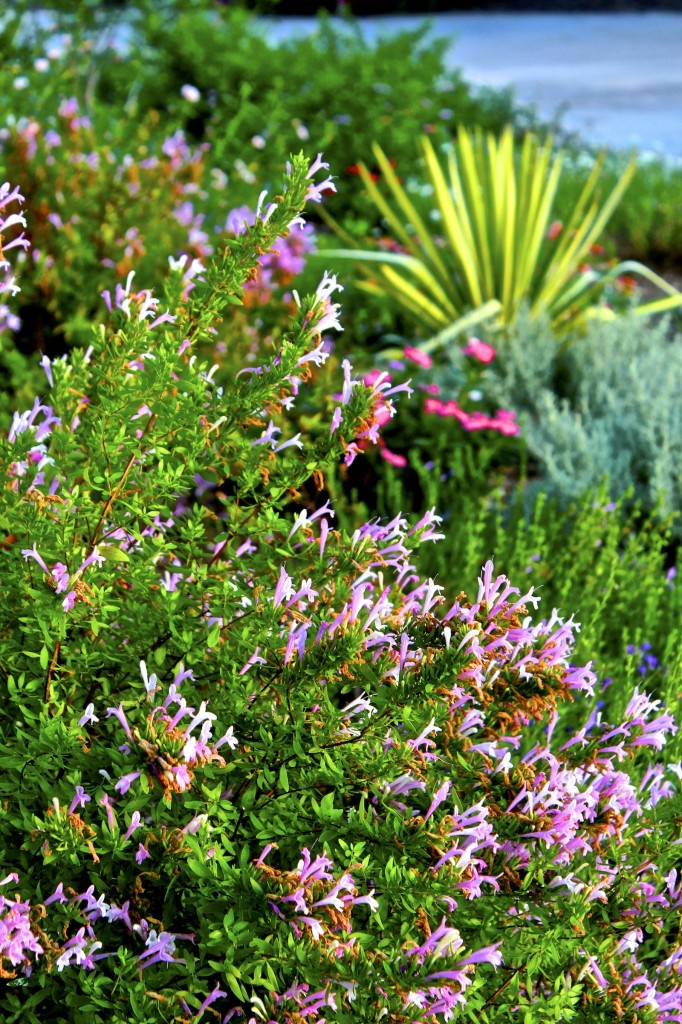Contemporary, xeric garden showcased at Garden Bloggers Fling
As Pam Penick, Laura Wills and I planned the recent 2018 Garden Bloggers Fling in Austin, we aimed to showcase a wide variety of garden styles that would provide inspiration to participants.
Located in southwest Austin, this spacious garden highlighted many native and adapted plants in a stunning contemporary setting.
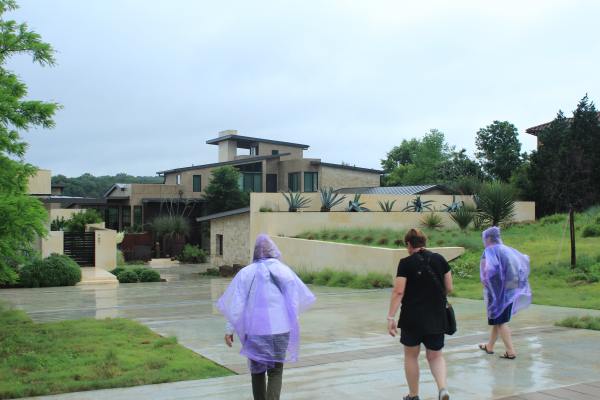 Armed with rain ponchos, 92 gardeners braved the rain, and it was well worth it.
Armed with rain ponchos, 92 gardeners braved the rain, and it was well worth it.
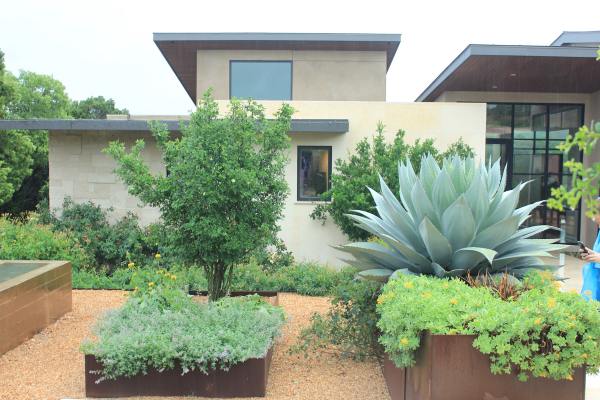
In the vegetable garden, edibles and ornamentals spill out of contemporary Cor-Ten steel planters.
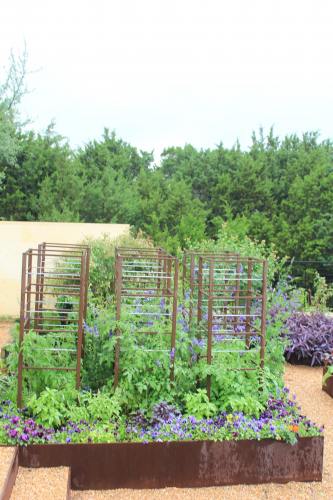
Using raised planters makes gardening much easier here in Central Texas, where our inhospitable clay and limestone soil presents a real challenge.
Even with regular amendments to the soil, the weather extremes of drought and flood here require serious elbow grease to bring forth vegetables without a raised bed.
While we were hoping for sunshine during our visit to this garden, the crops were relieved to have the rain.
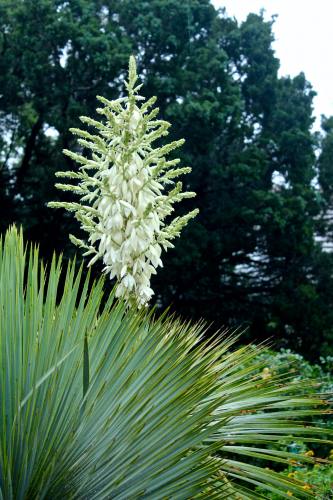
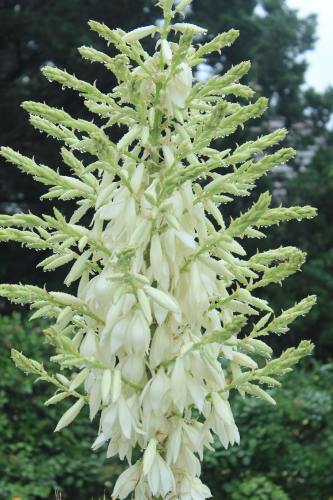
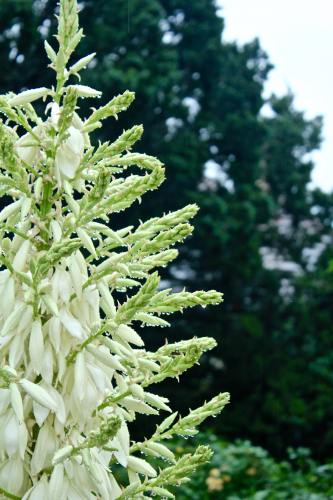
Rain droplets on the yucca bloom add another dimension.
One of the quintessential plants of our region, the yucca provides structure, evergreen color and beautiful blooms in the garden.
The semi-soft form of the bloom provides a contrast to the seriously spiky leaves.
This one must have been missed by deer passersby, left for bloggers to admire.
But, when the inevitable heat and drought arrive, and the deer are searching for food, they love to nibble on these blooms.
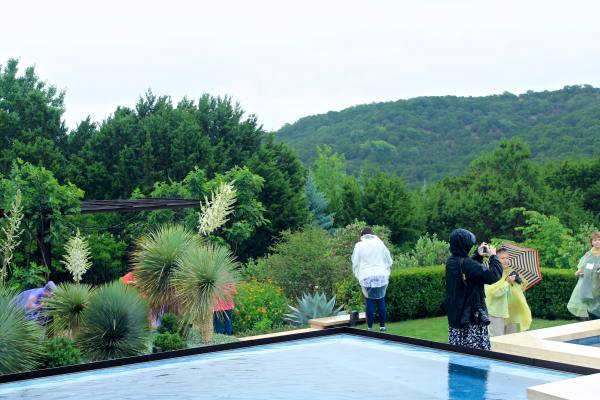
The clean lines of the pool contrast with the soft and spiky collection of native plants beyond the edge.

We surveyed the garden under the watchful eye of this little guy. I’m sure he wondered what all these people were doing in his garden while he was left inside.

I think he was ready to get his yard back to himself.
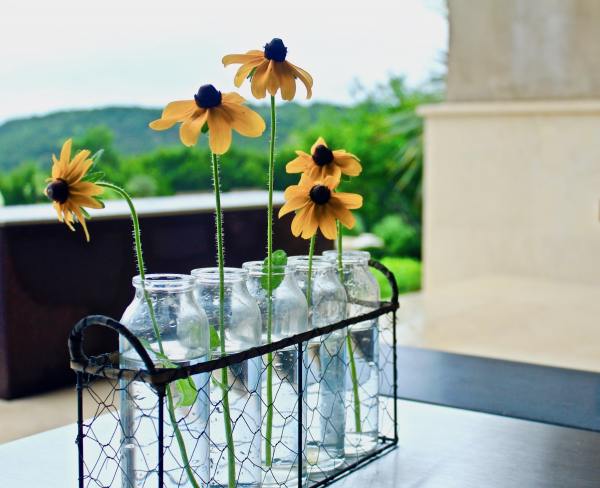
This clean and simple arrangement was the only decor on the patio overlooking the pool and the vista beyond, creating a lovely focal point.
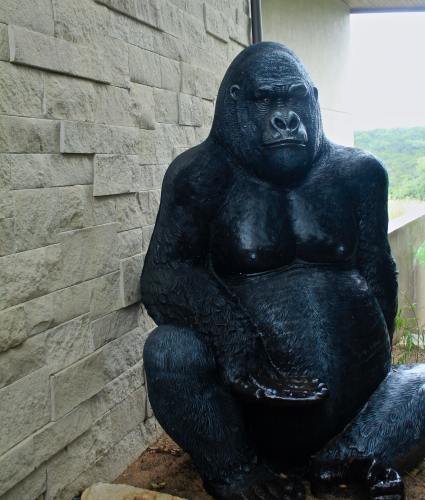
Around the corner of the house, tucked away out of sight against a wooded area, the gorilla awaits any intruders.
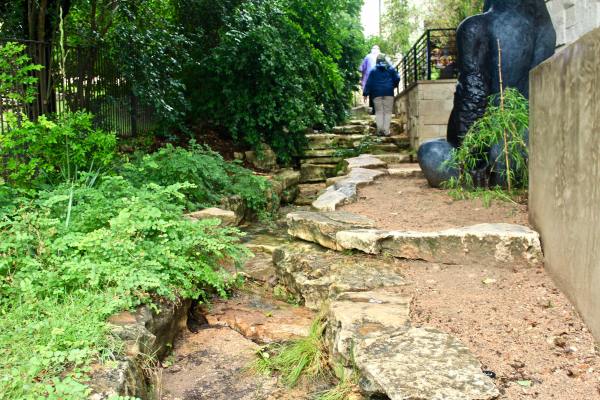
Or eager grandkids.
I imagine most little kids would be thrilled to share their secret hiding space with this big fella.
The perfect setting for some make-believe play, a collection of trucks and other toys are carefully parked, waiting for the next play day with King Kong.
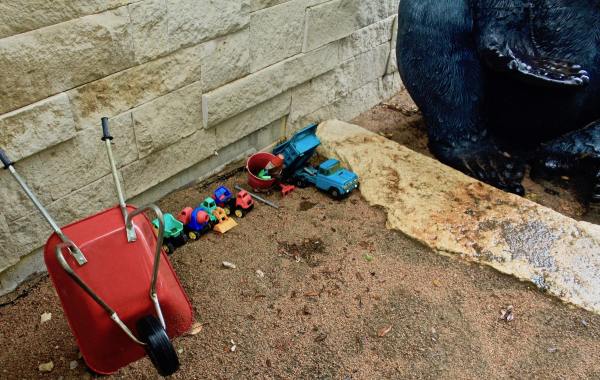
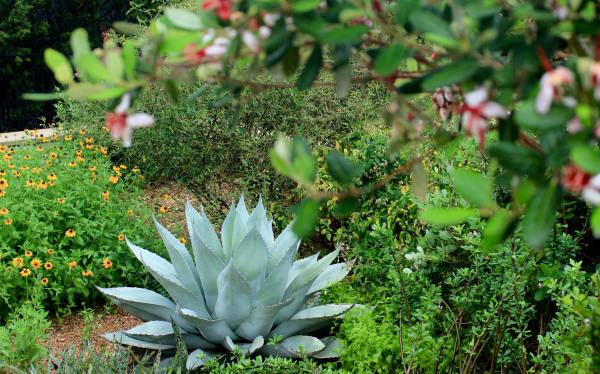
A striking garden in a beautiful setting, this one was a real gem.

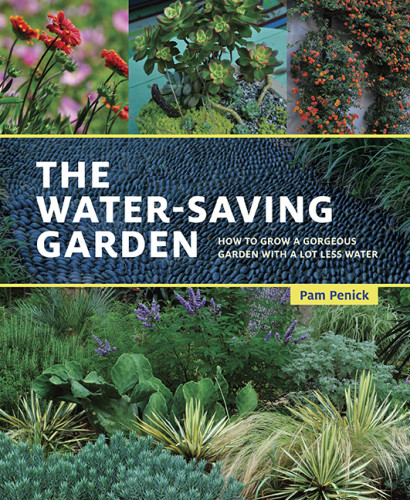 There are seven fundamental garden design principles that define that define what we call xeriscaping, water-wise gardening or drought tolerant landscaping. They serve to maximize water conservation through a simple set of steps that are easy to undertake. They include:
There are seven fundamental garden design principles that define that define what we call xeriscaping, water-wise gardening or drought tolerant landscaping. They serve to maximize water conservation through a simple set of steps that are easy to undertake. They include: